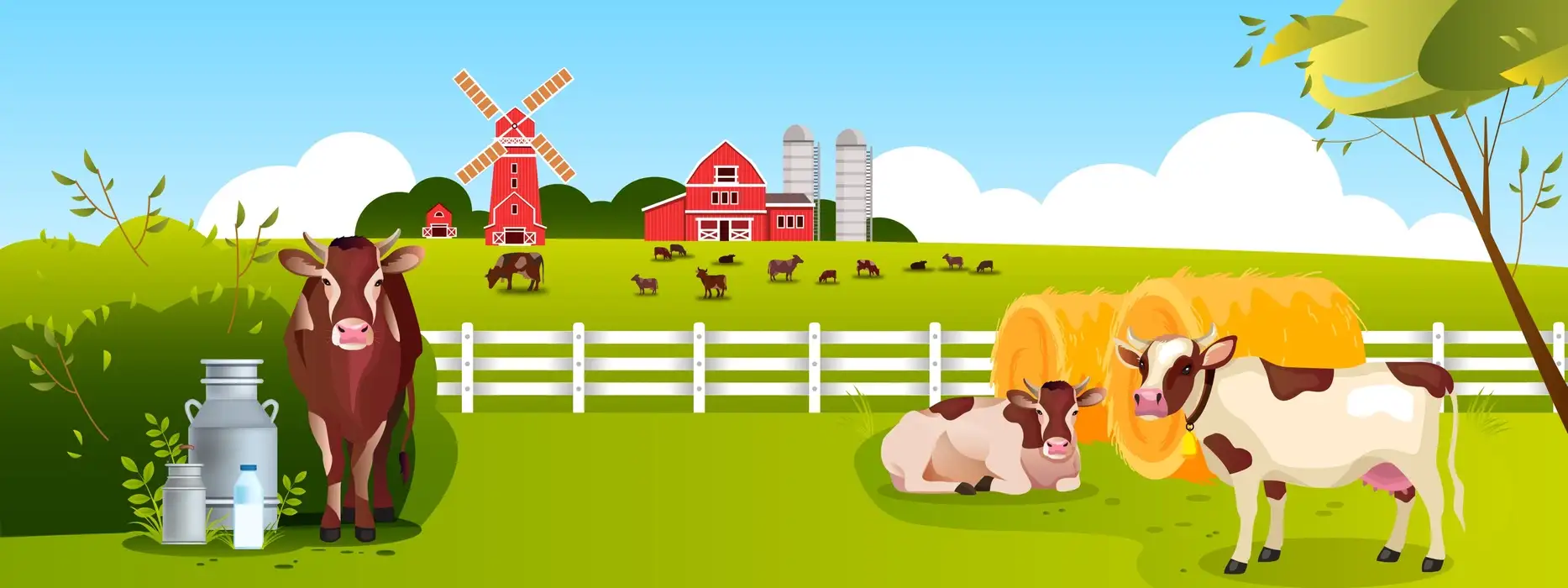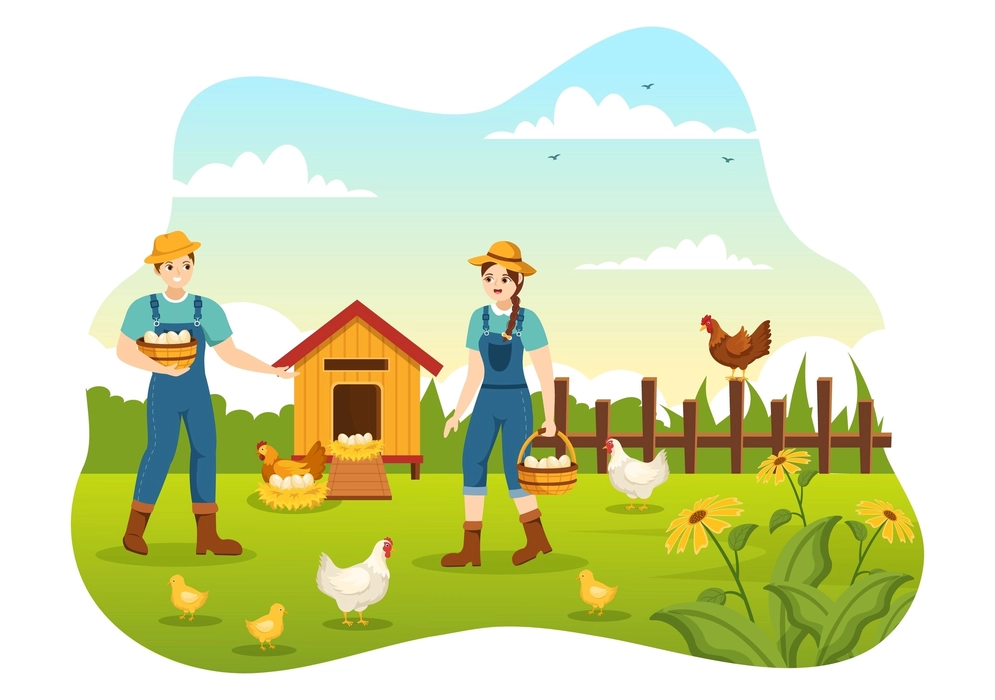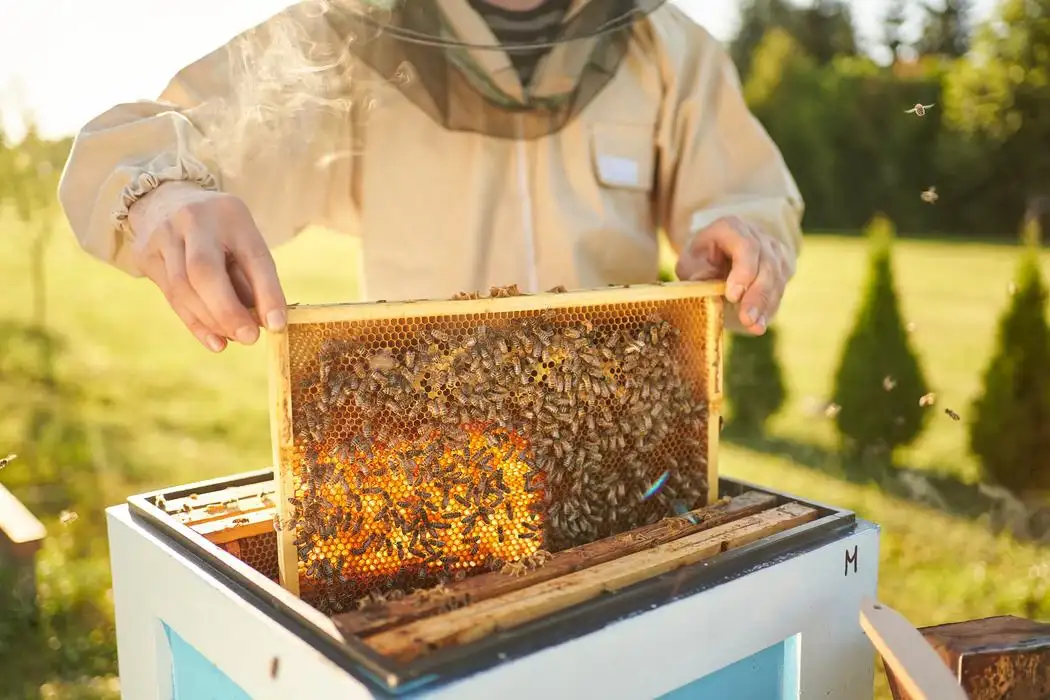Introduction
The definition of agriculture is frequently misunderstood to mean just the production of crops for food and fiber. Agriculture, however, extends beyond just growing plants, it includes the breeding of livestock for their beneficial products. Since the beginning of time, humans have been raising animals for their own needs. Since humans first domesticated animals some 13,000 years ago, they have developed innovative techniques to increase both the quality and quantity of the things they can produce from animals.
Types of Animal Husbandry
Dairy Farming

- The practice of raising dairy animals, such as cows, buffalo, goats, and others, for milk production and its subsequent processing to produce products like butter, ghee, cheese, and cream, among other things, is known as dairy farming.
- Native Indian cow and buffalo breeds including the Gir, Sahiwal, Red Sindhi, Siri, Mahiwal, Surti, and Jaffarabadi, as well as exotic breeds like Jersey, Red Dane, and Holstein Friesian, are frequently bred for their desirable traits.
- When raising cows to extract milk, it is essential to maintain the required standards of health and hygiene.
- Good quality and safe-to-consume products are ensured by the good health and excellent living conditions of the animals.
Learn More about Agriculture. Check out more videos in Science Class 8 Lesson 1. Clear your doubts from the Science experts teacher.
Poultry Farming

- The practice of domesticating and raising birds, such as hens, cocks, ducks, geese, and turkeys, for their meat, eggs, and other products is known as poultry farming.
- Different techniques are used by poultry farmers to raise chickens.
- The most popular method is intensive poultry farming, in which hundreds of birds are frequently raised in tier-by-tier battery cages.
- Farmers are becoming more conscious of the drawbacks of intensive farming, which has led to a rise in the popularity of free-range farming.
- In this style of poultry farming, the birds are given free access to a large area during specific hours of the day.
- Better health and disease resistance are encouraged by this practice.
- In poultry farming, hens are raised primarily for two products: eggs or meat.
- It is advised to provide a healthy, disease-free environment, along with decent, nourishing meals and spacious places.
Pisciculture

- Fish rearing for food is often known as pisciculture or fish farming.
- Typically, fish tanks or other enclosures such as ponds are used to raise the fish.
- The fish are fed artificially and later harvested.
- In composite fish culture, both domestic and foreign varieties are raised in the same pond or enclosure.
- The fish that are selected to be raised together must be able to co-exist.
- The most popular fish species raised for food include trout, carp, salmon, tuna, tilapia, etc.
Apiculture

- Apiculture is the practice of raising bees in colonies in places called apiaries to produce honey and other items like royal jelly, beeswax, etc.
- In addition, bees are also utilized for their pollination services.
- For the colonies to expand, beekeepers frequently employ wooden hives.
- Bee farming is a low-cost, low-labor method of farming.
- Bees can be easily grown without the requirement for any fertile ground.
- However, it is important to make sure the bee farm is situated close to a flower garden with enough pollen and nectar.
- In addition, it is necessary to prevent the use of insecticides near the apiaries.
Advantages of Animal Husbandry
Following are the advantages of animal husbandry in agriculture and human welfare.
- The dairy industry in animal husbandry makes a significant contribution to the global food sector by offering a wide range of goods, including milk and its derivatives like butter, various types of cheese, ghee, cream, etc.
- Dairy farming makes a vital contribution to a nation’s economy. With 186 million tonnes of milk consumed yearly. India is one of the world’s largest milk producers.
- In addition to being raised for their milk, dairy farm animals are also used for their flesh.
- Because of its high protein content and flavor meat is a very popular food item.
- Livestock and poultry raised on the grounds, generally graze there, this helps in suppress weed development.
- The items that are obtained from all the reared animals help in increasing the nation’s economy as they are exported to various foreign countries.
- All these animal-rearing activities have generated employment options in rural areas.
- It has increased food security and provided money to rural impoverished people.
- Utilizing animal waste as manure on farmland is one example of how sustainable practices to aid in the efficient management of waste. It encourages effective nutrient cycling.
- Moreover, manure can be used in fish meals.
- Manure and cow dung are valuable sources of fuel.
- Additionally, animal husbandry is managed to produce fibers that are crucial to the textile industry.
Summary
- The process of raising livestock to exploit their products is known as animal husbandry.
- Dairy farming, poultry farming, fish farming, and bee farming are the four main subfields of animal husbandry.
- Animal husbandry procedures must assure a safe, secure, and healthy environment for the animals’ well-being, which will in turn yield high-quality goods.
- Animal husbandry produces a number of significant goods that are essential to our daily life.
- Additionally, animal husbandry creates job opportunities.
Frequently Asked Questions
1. Differentiate between layers and broiler.
Ans:
|
Layers |
Broilers |
|
These are chickens that are raised for egg production. |
These are chickens that are raised for meat production. |
|
They need protein in less quantity in their diet. |
They require a protein-rich diet. |
|
They need proper spacing and lighting. |
They do not need much spacing and lighting. |
2. Enlist types of Honey bees used in apiculture.
Ans: Honey bees reared for apiculture are-
- Apis dorsata or The Rock Bee
- Apis cerana indica or The Indian hive Bee
- Apis mellifera or The European Bee
- Apis florea or The Little Bee.
3. Which state of India produces the maximum number of fish under pisciculture?
Ans: Andhra Pradesh is the highest fish-producing state in India. It produces around 34.50 lakh tonnes of fish per year.